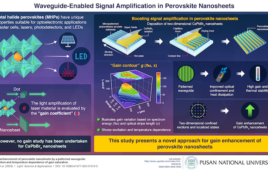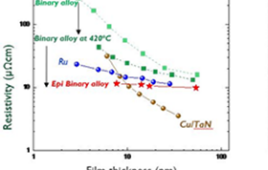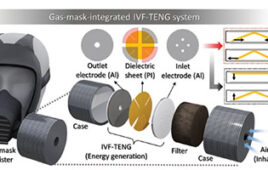The yellow hue of a series of samples from wall paintings in several Mayan archaeological sites can be attributed to the presence of indigoid compounds, including isatin and dehydroindigo, attached to palygorskite, a local phyllosilicate clay. SEM/EDX, TEM, UV/Vis spectroscopy, and voltammetry of microparticles show that the ancient Mayas could prepare indigo, Maya Blue, and “Maya Yellow” during successive stages. |
For
the Maya, blue was the color of the gods. For ritual purposes, art
objects, and murals, they used Maya blue, a pigment without equal with
regard to boldness, beauty, and durability. Maya blue is made of indigo
embedded in a special clay mineral called palygorskite.
A
team led by Antonio Doménech at the University of Valencia (Spain) has
now discovered that some Mayan yellow pigments are based on similar
components. As the scientists report in the journal Angewandte Chemie,
the Maya appear to have developed a preparative technique that was not
limited to Maya blue and anticipated modern syntheses of
organic–inorganic hybrid materials.
Maya
blue is so fascinating because it has a special brightness and a
singular color that can range from a bright turquoise to a dark greenish
blue. Does the color stem from a unique organic component, a unique
linking of the molecules, or a unique production process? Doménech and
his team tested these hypotheses. They surmise that the hue is
determined by the ratio of indigo to dehydroindigo, the oxidized form.
This ratio depends on how long the Maya heated their formulation. This
would allow for the formation of different variations of the addition
compound formed by the indigo compounds and the mineral. The researchers
further conjecture that the Maya were also able to produce yellow and
green pigments from indigo-based pigments.
By
means of various spectroscopic and microscopic methods, as well as
voltammetry—a special electrochemical process that allows for the
identification of pigments in micro- and nanoscale samples from works of
art—the scientists examined a series of yellow samples from Mayan
murals from different archaeological sites in the Yucatán (Mexico). The
results confirm that a whole series of yellow pigments from Mayan mural
paintings are made of indigoids bound to palygorskite. The researchers
also found ochre.
Doménech
and his co-workers think it very likely that the preparation of such
“Maya yellow” pigments was an intermediate step in the preparation of
indigo and Maya blue. Leaves and branches from indigo plants were
probably soaked in a suspension of slaked lime in water and the coarse
material filtered out. A portion of the yellow suspension could then be
removed and added to palygorskite to make Maya yellow. The remaining
suspension would then be stirred intensely and ventilated until it took
on a blue color. It was then filtered and dried to obtain indigo for use
as a dye. It could also be ground together with palygorskite and heated
to produce Maya blue.
Source: Wiley-VCH Verla





